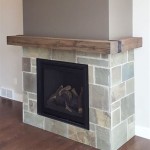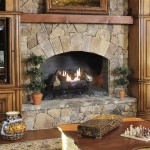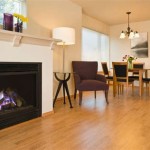Heat Surge Electric Fireplace Repair: A Comprehensive Guide
Heat Surge electric fireplaces offer a convenient and aesthetically pleasing heating solution for many homes. Their ease of installation and operation makes them popular, but like any appliance, they are subject to potential malfunctions. This article will provide a detailed overview of common Heat Surge electric fireplace problems and offer practical repair guidance to assist in troubleshooting and resolving these issues.
Before attempting any repairs, it is imperative to disconnect the electric fireplace from the power source. This crucial safety precaution minimizes the risk of electric shock and ensures safe working conditions throughout the repair process. Always consult the manufacturer's manual for specific safety guidelines and warnings related to the particular Heat Surge model being serviced.
Identifying Common Issues in Heat Surge Electric Fireplaces
Several recurring issues can manifest in Heat Surge electric fireplaces. Recognizing these problems is the first step toward effective repair. Common issues include a lack of heat output, a malfunctioning flame effect, unusual noises emanating from the unit, and problems with the remote control.
The absence of heat output, despite the unit being powered on, is a frequent complaint. This could stem from a faulty heating element, a tripped thermal overload switch, or a problem with the fan that distributes the heat. Visually inspecting the heating element for any signs of damage, such as breaks or discoloration, is a crucial initial step. Similarly, verifying the functionality of the thermal overload switch and fan motor is essential.
A malfunctioning flame effect can detract significantly from the aesthetic appeal of the electric fireplace. This problem typically involves issues with the light source, the rotating reflector, or the motor responsible for creating the flame illusion. If the flame effect is absent or flickering erratically, inspecting the light bulb or LED array is necessary. Additionally, ensuring the reflector is clean and unobstructed and that the motor is functioning correctly can often resolve the issue.
Unusual noises, such as grinding, squealing, or rattling, can indicate a problem with the internal components of the electric fireplace. These noises often point to issues with the fan motor, the reflector motor, or loose components within the unit. Identifying the source of the noise is crucial for pinpointing the specific component that requires attention. Lubricating the fan motor or tightening any loose screws or connections may be sufficient to eliminate the noise.
Remote control problems can manifest as a complete lack of response from the fireplace or intermittent control. This may be due to dead batteries in the remote, a faulty remote sensor in the fireplace, or interference from other electronic devices. Replacing the batteries in the remote is the first step, followed by ensuring the remote sensor on the fireplace is clean and unobstructed. If the problem persists, testing the remote with another compatible device or replacing the remote sensor may be necessary.
Troubleshooting Steps for Common Heat Surge Problems
Once a potential issue has been identified, a systematic approach to troubleshooting is essential. This involves a process of elimination, starting with the simplest solutions and progressively moving to more complex diagnostic steps.
No Heat Output:
Begin by confirming that the electric fireplace is properly plugged into a functioning electrical outlet. Check the circuit breaker to ensure it has not tripped. If the unit still does not produce heat, inspect the heating element for any visible signs of damage. A multimeter can be used to test the continuity of the heating element. If the heating element is faulty, it will need to be replaced. Next, locate the thermal overload switch, typically a small reset button, and ensure it has not tripped. If it has tripped, reset it by pressing the button. If the thermal overload switch continues to trip, it could indicate a more serious problem with the heating element or airflow.Check the fan motor for proper operation. Ensure that the fan blades are not obstructed and that the motor is running smoothly. If the fan motor is not functioning, it may need to be replaced. A multimeter can be used to test the voltage going to the fan motor. If there is voltage, but the fan isn't turning, then the fan motor is most likely faulty.
Malfunctioning Flame Effect:
Start by inspecting the light source. If the light source is a bulb, replace it with a new bulb of the correct wattage and type. If the light source is an LED array, visually inspect for any damaged or burnt-out LEDs. If LEDs are damaged, the entire LED array may need to be replaced. Ensure that the rotating reflector is clean and unobstructed. Dust and debris can accumulate on the reflector, reducing the effectiveness of the flame effect. Check the motor responsible for rotating the reflector. If the motor is not functioning, it may need to be replaced. Listen for any unusual noises coming from the motor. If the motor is making grinding or squealing noises, it may need to be lubricated or replaced.Unusual Noises:
Identify the source of the noise. Carefully listen to the electric fireplace while it is operating to pinpoint the location of the noise. Once the source of the noise has been identified, inspect the corresponding component. If the noise is coming from the fan motor, lubricate the motor bearings with a light oil. If the noise is coming from the reflector motor, lubricate the motor bearings. Tighten any loose screws or connections within the unit. Loose components can vibrate and cause rattling noises.Remote Control Problems:
Replace the batteries in the remote control with new batteries. Ensure that the batteries are installed correctly, with the proper polarity. Clean the remote sensor on the electric fireplace. Dust and debris can accumulate on the sensor, interfering with the remote signal. Aim the remote directly at the sensor on the electric fireplace. Ensure that there are no obstructions between the remote and the sensor. Test the remote with another compatible device, if possible. This will help determine if the problem is with the remote itself or with the fireplace. If the remote is faulty, it may need to be replaced. If the remote sensor on the fireplace is faulty, it may need to be replaced.Essential Repair Techniques for Heat Surge Fireplaces
Many repair tasks can be accomplished with basic tools and a methodical approach. However, some repairs may require specialized tools or a greater degree of technical expertise.
Replacing a Heating Element:
Disconnect the electric fireplace from the power source. Access the heating element by removing the necessary access panels or screws. Carefully disconnect the wires connected to the heating element. Remove the old heating element and install the new heating element, ensuring it is properly secured. Reconnect the wires to the new heating element, ensuring they are properly connected. Reassemble the electric fireplace, replacing any access panels or screws.Replacing a Fan Motor:
Disconnect the electric fireplace from the power source. Access the fan motor by removing the necessary access panels or screws. Disconnect the wires connected to the fan motor. Remove the old fan motor and install the new fan motor, ensuring it is properly secured. Reconnect the wires to the new fan motor, ensuring they are properly connected. Reassemble the electric fireplace, replacing any access panels or screws.Replacing a Flame Effect Motor:
Disconnect the electric fireplace from the power source. Access the flame effect motor by removing the necessary access panels or screws. Disconnect the wires connected to the flame effect motor. Remove the old flame effect motor and install the new flame effect motor, ensuring it is properly secured. Reconnect the wires to the new flame effect motor, ensuring they are properly connected. Reassemble the electric fireplace, replacing any access panels or screws.Replacing a Remote Sensor:
Disconnect the electric fireplace from the power source. Access the remote sensor by removing the necessary access panels or screws. Disconnect the wires connected to the remote sensor. Remove the old remote sensor and install the new remote sensor, ensuring it is properly secured. Reconnect the wires to the new remote sensor, ensuring they are properly connected. Reassemble the electric fireplace, replacing any access panels or screws.When performing any of these repairs, care must be taken to avoid damaging other components. Use the appropriate tools and techniques for each task. If unsure about any aspect of the repair process, consult a qualified electrician or appliance repair technician.
Regular maintenance can extend the lifespan of a Heat Surge electric fireplace and prevent many common issues from arising. This includes regular cleaning to remove dust and debris from internal components, periodic inspection of wiring and connections, and prompt replacement of worn or damaged parts.
By employing these troubleshooting techniques and understanding essential repair procedures, many Heat Surge electric fireplace problems can be effectively addressed, restoring functionality and extending the life of the appliance.

How To Repair Your Heat Surge Fireplace

Heat Surge Troubleshooting And Control Board Replacement

Commercial Chemical Vacuum Medic Heat Surge Parts

How To Repair Your Heat Surge Fireplace

Repair Heat Surge X5c Portable Electric Fireplace Heater Amish Cabinet

Heat Surge Heater Mini Glow Wide Screen Oak Multi Color Flame Myvacuumplace Vacuums Etc

Parts Or Repair Heat Surge Mini Glo Portable Heater Electric Fireplace 1200w

Heat Surge Shutdown Bypass Fix Floor Control Models Versions

Power Tower Roll N Glo Heat Surge

Heat Surge M6 Parts Fireplaces
Related Posts








